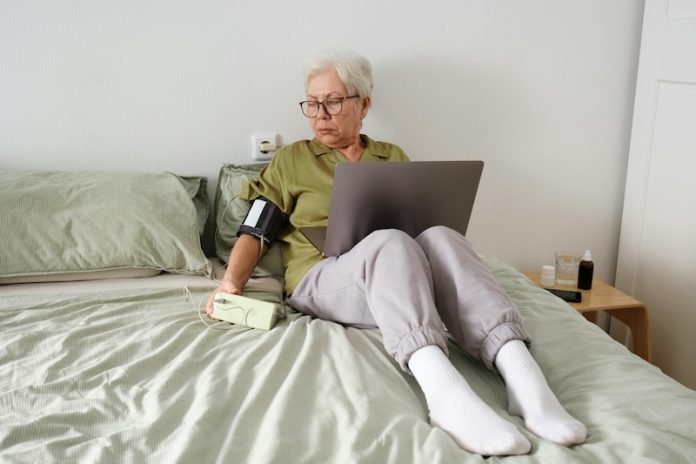
Blood pressure has long been a crucial marker for assessing heart health, typically measured while you’re comfortably seated at the doctor’s office.
However, groundbreaking research suggests that this common practice might not be sufficient to gauge the full spectrum of heart health risks.
A recent study, spotlighted at the American Heart Association’s Hypertension Scientific Sessions 2023, unveils the potential dangers of elevated blood pressure not just in a seated position but also while lying flat.
This revelation underscores the complexity of our body’s blood pressure regulation and its implications for heart health.
Conducted by Duc M. Giao, a dedicated medical student from Harvard Medical School, and his team, the study delved into health records of over 11,000 adults from a period between 1987 and 1989.
These individuals underwent blood pressure assessments in a lying position, with researchers tracking their health outcomes for nearly 30 years. The findings were startling: 16% of the participants exhibited high blood pressure while lying down, despite having normal readings when seated.
The implications of these findings are profound. Individuals with consistently high blood pressure, regardless of their position, faced an increased likelihood of heart-related issues, including coronary heart disease, heart failure, and stroke, alongside a heightened risk of premature death.
Notably, those with elevated blood pressure solely in the lying-down position shared these elevated risks, suggesting that position-specific blood pressure readings could be a vital indicator of cardiovascular health.
What does this mean for you? According to Giao, people with a higher risk of heart disease or stroke should consider having their blood pressure checked in various positions, including lying down.
This approach might not only offer a more comprehensive view of one’s cardiovascular health but could also aid in managing blood pressure more effectively across different daily activities and even during sleep.
The study’s focus on middle-aged adults adds another layer of relevance, pointing to the necessity of re-evaluating how blood pressure is monitored in this demographic.
Although further research is needed to extend these findings to older populations, the current insights emphasize the importance of a more holistic approach to blood pressure measurement.
In essence, the study challenges the traditional methodologies of blood pressure assessment, advocating for the inclusion of lying-down measurements during routine health evaluations.
Such a practice could significantly enhance our ability to detect and address heart health risks, potentially saving lives with a simple adjustment to our medical routines.
If you care about high blood pressure, please read studies that early time-restricted eating could help improve blood pressure, and natural coconut sugar could help reduce blood pressure and artery stiffness.
For more information about blood pressure, please see recent studies about added sugar in your diet linked to higher blood pressure, and results showing vitamin D could improve blood pressure in people with diabetes.
Copyright © 2024 Knowridge Science Report. All rights reserved.



